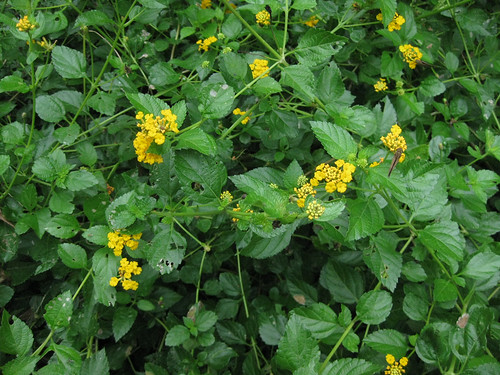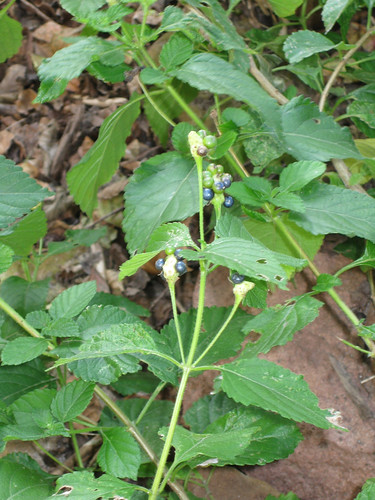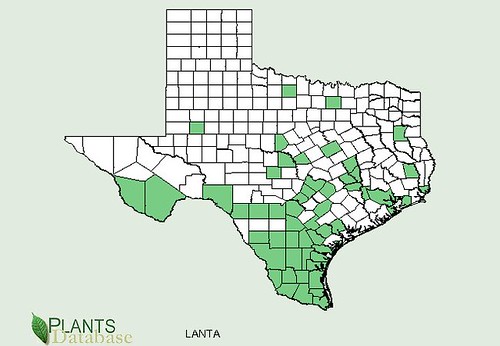Scientific Name(s): Lantana spp.
Abundance: plentiful
What: ripe berries (dark blue colored)
How: raw or cooked
Where: sunny yards, borders, fields
When: summer, fall
Nutritional Value: low
Dangers: Leaves and unripe fruit are very poisonous and eating them can lead to death.
Medicinal Summary:
Leaves* - wound healing; antimicrobial (
poultice, tisane used as a wash)
*external use only due to being extremely poisonous if taken internally
Leaf Arrangement: The leaves are arranged oppositely alternating along the stems.
Leaf Shape: The leaves are ovate to lanceolate, with a length ranging from 2 to 5 inches and a width of 1 to 3 inches.
Leaf Venation: The venation is typically pinnate, with prominent lateral veins.
Leaf Margin: The leaf margin is serrated, providing a toothed appearance.
Leaf Color: The leaves are green, and there may be variations in color on the top and underside.
Flower Structure: The flowers are arranged in clusters, known as umbels, at the ends of the stems. Each flower has a tubular structure with a diameter of approximately 0.5 to 1 inch and features multiple small, tubular petals.
Flower Color: Lantana flowers exhibit a wide range of colors, including shades of pink, orange, yellow, and purple. In some species, flowers change color as they age.
Fruit: The fruit is a small, fleshy drupe, usually dark purple to black when mature.
Seed: Seeds are small, ovoid, and dark-colored, often found within the fruits.
Stem: The stems are typically green, woody, and may have a slightly square-shaped appearance.
Hairs: The plant may have fine hairs on the stems and leaves. Leaves have a rough texture.
Height: Lantana plants vary in height but generally range from 1 to 4 feet, depending on the species and growing conditions.
Lantana plant and flowers. TOXIC! DEADLY!

Another lantana. TOXIC! DEADLY!

Lantana berries, edible only when fully ripe.

Texas distribution, attributed to U. S. Department of Agriculture. The marked counties are guidelines only. Plants may appear in other counties, especially if used in landscaping.

North American distribution, attributed to U. S. Department of Agriculture.

Cooked lantana berries are considered starvation food in that they aren't eaten unless there's nothing else to eat. All other parts of the plant are deadly! Boil or toast the berries before eating them.
The pungent leaves of Lantanas contain powerful antibiotics and after mashing the fresh leaves they can be used EXTERNALLY on wounds to reduce the chance of infection. Do NOT chew the leaves to make the poultice as they'll poison you.
Buy my book! Outdoor Adventure Guides Foraging covers 70 of North America's tastiest and easy to find wild edibles shown with the same big pictures as here on the Foraging Texas website.






